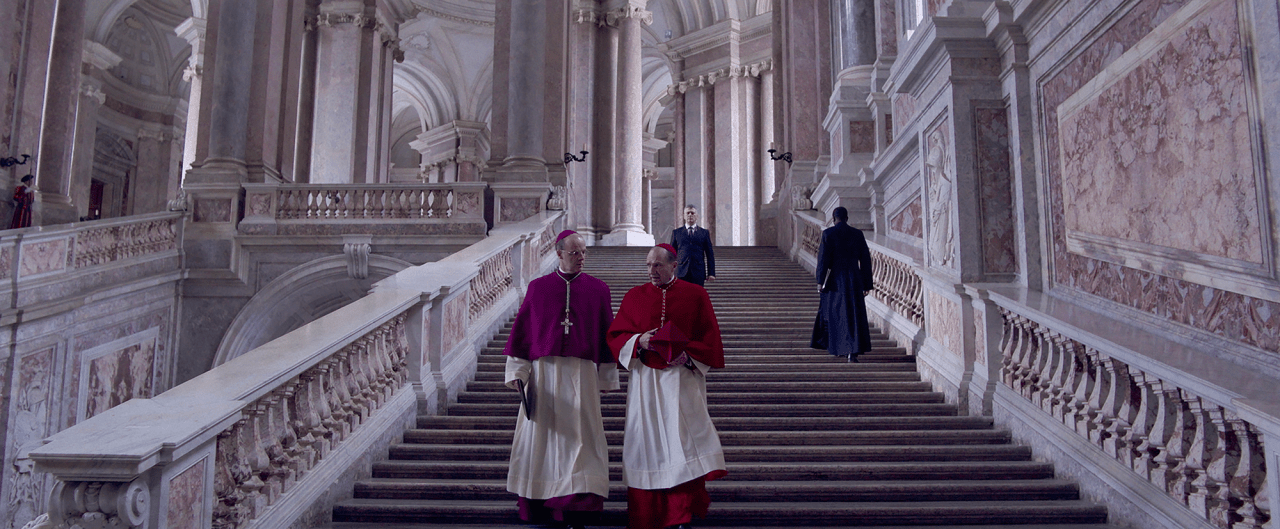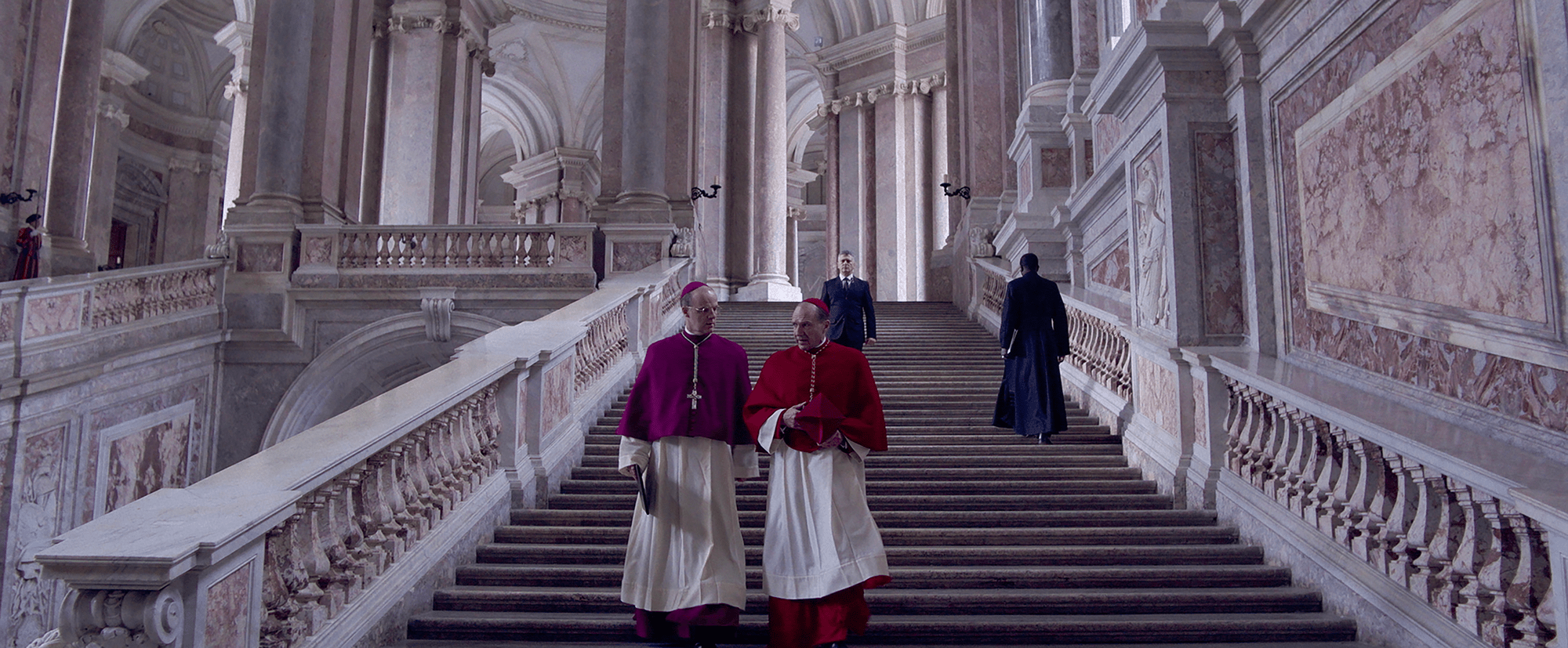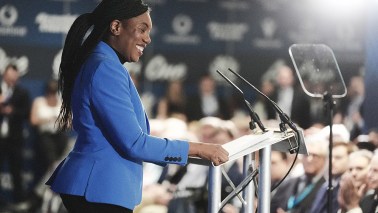
Online viewings of Conclave increased threefold following the death of Pope Francis last month. At least some of the traffic was rumoured to have come from the Vatican itself. This raises many questions, but the most pertinent for me this week is, what did the cardinals think of the carpets? Do they really have coffee machines in their rooms like Tremblay? Minibars like Bellini? Their peace spoiled by the sounds of a lift shaft as in the case of long-suffering Lawrence?
If any of these details passed you by, it’s worth watching the film again. In fact, after listening to an interview with the production designer, to be broadcast on BBC World Service next week, you will feel positively compelled to do so. Suzie Davies, who also designed the sets for Mr Turner and Saltburn, clearly had fun. The idea behind giving Tremblay (John Lithgow) an espresso machine was apparently to rouse suspicions, ever so subtly, as to how he obtained such a luxury; he also has a larger room than the other cardinals. Bellini has a minibar because, well, he’s played by Stanley Tucci. And Lawrence is just so forbearing.
With 130 job cuts looming over the World Service – in spite of an unlikely injection of cash from the autumn budget – it’s a good time to sing the praises of its documentary department. The World Service is not always the obvious channel to flip to for gripping factual content, but its current listings are actually more enticing than those for Radio 4. Forthcoming programmes that caught my eye this week include Print and Shoot: The Rise of 3D-Printed Guns, How Does Heat Affect Our Health?, The Future of the Alawites and of course Designing Conclave.
The last of these is the most compelling listening. Francine Stock, the ne plus ultra of interviewers for this type of programme, encourages Davies to divulge the most intriguing tricks of the trade. There is discussion of transforming MDF into marble, constructing rooms out of tiny spaces and uncovering hidden locations. I confess, I was disappointed to learn that the film’s Sistine Chapel was reassembled out of an existing set discovered in a film storage studio in Rome. The configuration was changed slightly, and parts were repainted, but the base was there. Still, this Rome wasn’t built in a day, and the secrets to its splendour abound.
The documentary about the effects of climate change on the human body is drier. A panel of experts in Bulgaria discuss sweat in front of a live audience. An important issue, with heat killing more and more people each year, but I can’t say I learned very much. I’m yet to listen to the programme on the Alawites, but the 3D guns feature is astounding. Its producer/presenter Dan Hardoon sounds about 19, but boy, has he done his research.
The World Service’s current listings are more enticing than those for Radio 4
The programme opens with the arrest of Luigi Mangione last December following the fatal shooting of UnitedHealthcare CEO Brian Thompson. You may recall that Mangione’s rucksack allegedly contained a 3D-printed pistol. To date, there have been relatively few criminal shootings with plastic guns, but the technology and its promotion on social media are growing at such a pace that a crisis seems inevitable.
Untraceable firearms can now be assembled from scratch at home using blueprints found online. While the original 3D-printed pistol could fire a single shot, you can now build a semi-automatic rifle. The use of self-assembled FGC-9 rifles by rebel groups in Myanmar in 2022 was well documented. The weapon was more than ten times cheaper to construct than anything available on the black market.
The weapon was more than ten times cheaper to construct than anything available on the black market
Hardoon tracks down a putative 3D-printed arms supplier in the UK via an advert on Facebook and interviews a lawyer who thinks it only right that information on how to build 3D guns is available. He lives in the US, obviously, and he believes that ‘sunlight is the best disinfectant and the truth is the best cure’. In theory, the printing of firearms could be regulated in the same way as the printing of currency, but the feeling seems to be that it will take a multiple-fatality incident for this to happen.
There’s a large library of similar programmes on the World Service online. Print and Shoot is part of the Trending series, which has recently delved into everything from the dark side of music streaming to the craze for dressing as animals in Russia. Designing Conclave comes under In the Studio (meet artists, singers, designers worldwide), and How Does Heat Affect Our Health? under The Evidence, a more sciencey offering. As with every channel, it can be hit or miss, but your chance of striking rare, neglected, mind-enriching gold is arguably higher here than it is in the wild world of Apple podcasts.








Comments